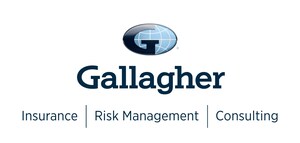ROLLING MEADOWS, Ill., July 30, 2024 /PRNewswire/ -- Only about half of US employers (52%) say they effectively manage healthcare costs, according to Gallagher's 2024 US Physical & Emotional Wellbeing Report. Several factors appear to contribute to the perception, including the fact that nearly all organizations (92%) experienced health plan premium increases during their most recent renewal. And of those, nearly 1 in 4 (24%) experienced double-digit increases. The Gallagher report, which gathered insights from 3,552 organizations, was developed to help employers optimize their investments in the physical and emotional wellbeing of their workforce.
Employers ranked the high costs of medical services (68%) and specialty drugs (44%) as their top two healthcare cost management challenges. Within the specialty drug segment, decision-makers are examining whether GLP-1s and other weight loss medications are worth the high prices. Increasingly, they're putting in utilization management, including prior authorization, and tying coverage to ongoing participation in a weight management program — a tactic used by 52%.
"The advantages of new treatments for obesity and excess weight are evident, but the significant cost associated with these medications cannot be ignored," said William F. Ziebell, CEO of Gallagher's Benefits & HR Consulting Division. "Employers that successfully navigate this challenge tend to take a mindful approach to their benefits design. For example, they may require an employee clear a body mass index threshold and actively participate in an employer-sponsored wellbeing program before they cover GLP-1 prescription costs. A holistic strategy, such as this, will likely result in better outcomes, as well as improved employee engagement."
Leveraging different tactics to share costs and improve benefits utilization.
While a silver bullet to reverse the trend of rising healthcare costs doesn't exist, many employers are making progress with different tactics to help employees better utilize and appreciate their benefit offerings.
Choice is one example. The majority of employers (80%) offer more than one medical plan. Consumer-directed health plans (CDHPs) with health savings accounts (HSAs) are among the fastest growing plan type. Now offered by 56%, an increase of 16 points from 2020, they're also attracting greater employee interest. Almost a quarter of these organizations (24%) enroll more employees in their CDHP with an HSA than any other plan.
While not as prevalent as CDHPs, some employers are trialing value-based tactics as a way to offer the highest-quality care at the lowest possible cost. Nearly 1 in 5 (17%) reduce employee costs for prescription drugs that treat chronic conditions. Other employers (14%) reduce employee costs for using designated centers of excellence for specific medical procedures. Employees may be incentivized through lower out-of-pocket costs, travel accommodations to the site of care, or both.
Stress, burnout, and mental health are areas of concern, but questions remain about whether leaders are equipped help their employees.
Most employers (70%) noted concerns about the impact of stress and burnout on their employees. However, only about 2 in 5 (42%) think their managers are well-equipped to refer employees to mental health support services. Recognizing this, 22% of organizations now offer training for HR and managers to navigate these situations, which is a 5-point increase since 2022. By equipping leaders with the right knowledge, they can offer timely support through appropriate resources or referrals, helping to lower the potential impact on overall wellbeing, performance, and productivity.
In addition to training, technology is also playing a role in mental health support. Many employers are adopting workplace collaboration software to increase social connection. The objective of these digital tools is to promote a positive culture by recognizing employees, addressing health challenges, and providing virtual access to peer support groups.
"It's important for decision-makers to understand the diverse needs of their workforce and use this as a guide to create a benefits offering that will appeal to them," said Ziebell. "Where many employers fall short is by failing to communicate when and how to use specific benefits, and their value. By ensuring that employees are well-informed and equipped with the necessary information to utilize their available benefits, employers can improve employee engagement and bolster retention."
ABOUT THE US PHYSICAL & EMOTIONAL WELLBEING REPORT
Gallagher's 2024 US Physical & Emotional Wellbeing Report is part of the Workforce Trends Report Series, covering medical benefits, pharmacy benefit management, wellbeing initiatives, and absence management. It presents recent findings on current and emerging trends to help employers optimize their investments in physical and emotional wellbeing. Upcoming reports in the series will each center on a different aspect of wellbeing. Data and insights are compiled from a variety of Gallagher benchmarking surveys conducted each year. In this report, they're based on the results of the US Benefits Strategy & Benchmarking Survey, gathered from January to March 2024. A total of 3,552 organizations across the US participated. Findings are broken out by region, organization size, and ownership structure for peer comparison.
ABOUT GALLAGHER
Arthur J. Gallagher & Co. (NYSE:AJG), a global insurance brokerage, risk management and consulting services firm, is headquartered in Rolling Meadows, Illinois. Gallagher provides these services in approximately 130 countries around the world through its owned operations and a network of correspondent brokers and consultants.
Contact:
Mary Schwartz, Gallagher
847.378.5893
[email protected]
SOURCE Gallagher

WANT YOUR COMPANY'S NEWS FEATURED ON PRNEWSWIRE.COM?
Newsrooms &
Influencers
Digital Media
Outlets
Journalists
Opted In





Share this article